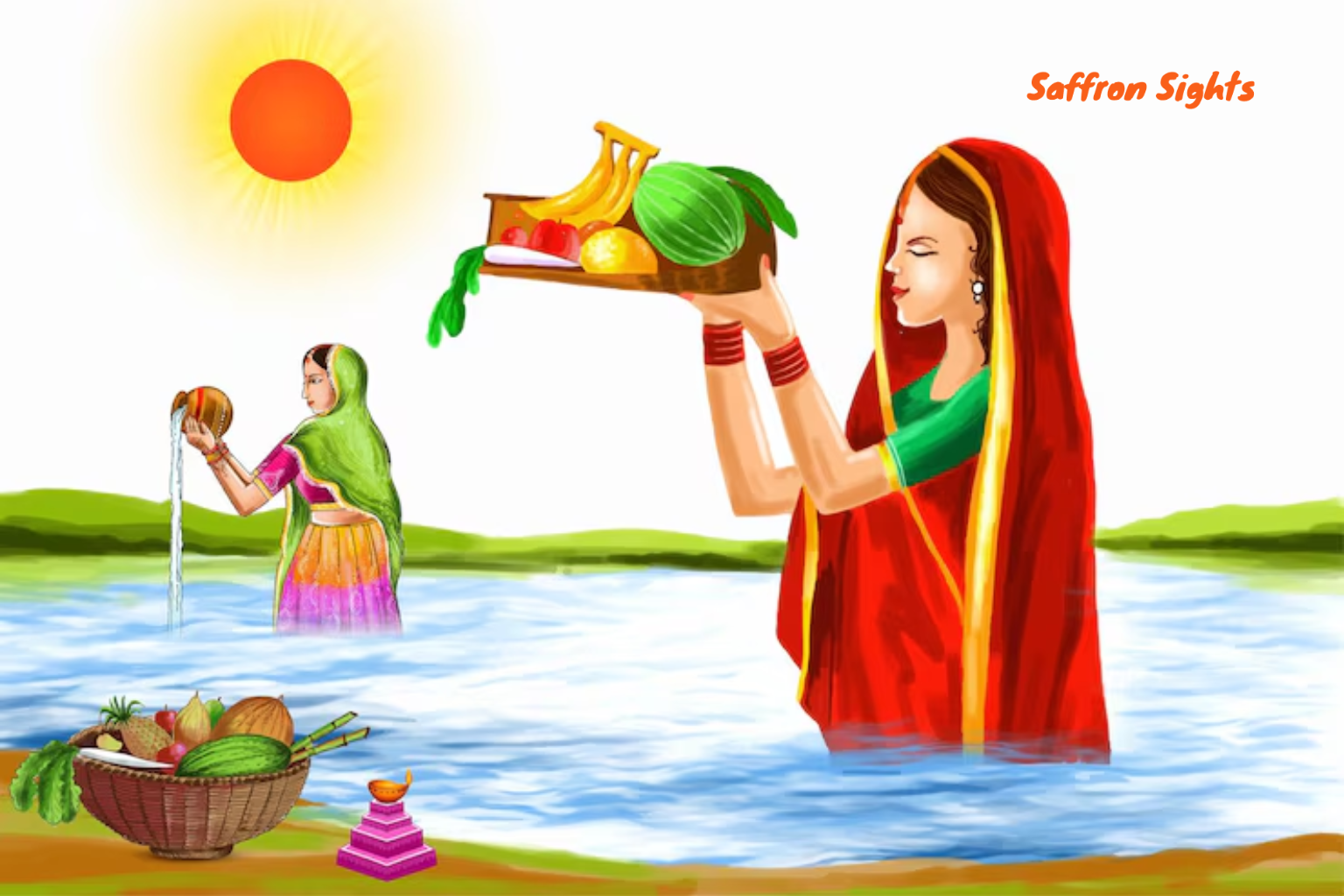Have you ever dreamed of a place where history whispers through ancient pillars, tigers roam freely in dense forests, and the air carries the echoes of Gandhi’s teachings?
Welcome to West Champaran, a hidden gem in Bihar that’s waiting to be explored.
This isn’t just another travel destination. It’s a land of contrasts—where spirituality meets adventure, and history blends seamlessly with nature. Whether you’re a history buff, a wildlife enthusiast, or someone seeking peace, West Champaran has something magical for everyone.
So, grab a cup of chai, sit back, and let me take you on a virtual tour of this incredible region. By the end of this blog, you’ll be ready to pack your bags and experience the wonders of West Champaran for yourself!
Bhitiharwa Ashram Where Gandhi’s Legacy Lives On
Imagine walking through the same humble hut where Mahatma Gandhi once stayed. In 1917, Gandhi arrived in Bhitiharwa to fight for the rights of indigo farmers who were suffering under oppressive British policies. This marked the beginning of the Champaran Satyagraha, a pivotal moment in India’s struggle for independence.
Today, the Bhitiharwa Ashram stands as a testament to Gandhi’s legacy. It’s not just a historical site but a place that inspires millions with its message of non-violence and self-reliance.
Fun Fact
Did you know that Gandhi’s stay in Bhitiharwa was his first major political campaign in India? It set the stage for the freedom movement that followed.
The ashram isn’t just about history—it’s also a place to reconnect with yourself. The peaceful surroundings make it perfect for meditation and yoga. As you sit under the shade of ancient trees, you can almost feel the presence of Gandhi and his teachings.
If you’re looking for a break from the chaos of everyday life, this is the place to be. The simplicity of the ashram, with its mud huts and serene environment, offers a stark contrast to the fast-paced world we live in today. It’s a reminder of how much we can achieve with minimal resources and a strong will.
Valmiki Tiger Reserve A Wildlife Enthusiast’s Paradise
Spread over 880 square kilometers, the Valmiki Tiger Reserve is a haven for wildlife lovers. Named after the sage Valmiki, this reserve is not just about tigers—it’s a treasure trove of biodiversity.
From leopards and sloth bears to over 250 species of birds, the reserve is a paradise for anyone who loves nature. The lush greenery, flowing rivers, and diverse wildlife make it a perfect spot for nature photography and wildlife safaris.
Fun Fact
The Valmiki Tiger Reserve is part of the Himalayan foothills, making it one of the most scenic wildlife destinations in India.
The highlight of any visit to the reserve is the jungle safari. Picture this: you’re in an open jeep, the cool breeze brushing against your face, and suddenly, you spot a majestic tiger strolling through the forest. It’s a moment you’ll never forget.
Pro tip:
Early mornings and late afternoons are the best times for wildlife sightings. Don’t forget your camera!
While tigers are the stars of the show, the reserve is home to so much more. You’ll find spotted deer, wild boars, and even the elusive Indian pangolin. The lush greenery and flowing rivers add to the reserve’s charm, making it a perfect spot for nature photography.
The reserve also plays a crucial role in conservation efforts. It’s a reminder of how important it is to protect our natural heritage for future generations.
Udaipur Wildlife Sanctuary A Tranquil Escape
If you’re a fan of serene landscapes and diverse wildlife, the Udaipur Wildlife Sanctuary is a must-visit. This sanctuary is a haven for flora and fauna, offering a peaceful escape from the hustle and bustle of city life.
Fun Fact
The sanctuary is home to several rare species of birds, making it a hotspot for birdwatchers.
Local legends say that the sanctuary is blessed by divine energy. Some even believe that ancient sages meditated here, adding a spiritual touch to its natural beauty.
The sanctuary’s tranquil surroundings make it an ideal spot for nature walks and birdwatching. As you stroll through the sanctuary, you’ll be greeted by the soothing sounds of chirping birds and rustling leaves. It’s a place where you can truly disconnect from the world and reconnect with nature.
Ashokh Stambh A Pillar of Ancient India
Standing tall at 35 feet, the Ashokh Stambh (Ashoka Pillar) in Lauriya Nandangadh is a marvel of ancient engineering. Built over 2,300 years ago, this pillar is a reminder of Emperor Ashoka’s reign and his commitment to peace and unity.
The intricate carvings and polished sandstone are a testament to the craftsmanship of the Mauryan era.
Fun Fact
The inscriptions on the pillar promote Buddhist teachings and Ashoka’s vision of a harmonious society.
The pillar is not just a historical monument but a symbol of India’s rich cultural heritage. It’s a place where you can reflect on the timeless wisdom of ancient India and the values that continue to guide us today.
Someswar Pahar Where History Meets Adventure
If you’re an adventure junkie, Someswar Pahar is the place for you. The hill is home to the ruins of an ancient fort that offers breathtaking views of the surrounding landscape.
As you trek to the top, you’ll feel like you’re stepping back in time. The fort’s strategic location gives you a glimpse into the region’s historical significance.
Fun Fact
On a clear day, you can even see parts of Nepal from the top of the hill!
Locals believe that Lord Shiva once meditated here, giving the hill its name. Many pilgrims visit the hill to seek blessings and experience its spiritual energy.
The trek to the top is not just a physical journey but a spiritual one. As you climb higher, you’ll feel a sense of peace and tranquility that’s hard to find elsewhere.
Lauriya Nandangarh Unraveling Ancient Mysteries
The ruins of Lauriya Nandangarh are a window into the past. Once a symbol of power, the fort now stands as a reminder of the region’s rich history.
As you explore the stonework and ancient structures, you’ll feel like you’ve traveled back in time. The fort’s intricate carvings and architectural brilliance are a testament to the skills of ancient craftsmen.
Final Thoughts
West Champaran is more than just a destination—it’s an experience that stays with you long after you leave. From the spiritual vibes of Bhitiharwa Ashram to the wild adventures in Valmiki Tiger Reserve, every corner of this region has a story to tell.
So, what are you waiting for? Pack your bags, book your trip, and uncover the wonders of West Champaran. Trust me, it’s a journey you’ll never forget.
Have you visited West Champaran? Share your experiences in the comments below! And if you haven’t, what are you waiting for? Start planning your adventure today and explore the hidden treasures of this incredible region.
Frequently Asked Questions
What is the best time to visit West Champaran?
The best time to visit West Champaran is from October to March. During these months, the weather is pleasant, making it ideal for exploring wildlife reserves, historical sites, and outdoor activities.
How can I reach West Champaran?
West Champaran is well-connected by road, rail, and air.
- By Road: It is accessible via NH28 and other state highways.
- By Rail: The nearest railway station is Narkatiaganj, which is well-connected to major cities.
- By Air: The closest airport is Patna Airport, approximately 200 km away.
Is Valmiki Tiger Reserve safe for tourists?
Yes, Valmiki Tiger Reserve is safe for tourists. However, it’s important to follow the guidelines provided by the forest department, such as staying inside the safari vehicle and avoiding loud noises to not disturb the wildlife.
Are there accommodation options in West Champaran?
Yes, West Champaran offers a range of accommodation options, from budget stays to eco-friendly resorts. Some popular choices include forest rest houses near Valmiki Tiger Reserve and guesthouses in Bettiah.
What should I pack for a trip to West Champaran?
- Comfortable clothing and sturdy shoes for trekking and safaris.
- A camera for capturing the stunning landscapes and wildlife.
- Insect repellent and sunscreen for outdoor activities.
- A reusable water bottle to stay hydrated.
Can I visit Bhitiharwa Ashram without a guide?
Yes, you can visit Bhitiharwa Ashram without a guide. However, hiring a local guide can enhance your experience by providing insights into the history and significance of the site.
Are there any entry fees for Valmiki Tiger Reserve?
Yes, there is an entry fee for Valmiki Tiger Reserve. The fees vary for Indian and foreign tourists, and additional charges apply for safari bookings. It’s best to check the official website or contact the forest department for the latest information.
What are the must-visit places in West Champaran?
Some must-visit places in West Champaran include:
- Udaipur Wildlife Sanctuary
- Bhitiharwa Ashram
- Valmiki Tiger Reserve
- Ashokh Stambh (Lauriya Nandangadh)
- Someswar Pahar
Is West Champaran suitable for family trips?
Absolutely! West Champaran offers a mix of history, spirituality, and adventure, making it a great destination for families. Children will enjoy the wildlife safaris, while adults can explore the historical and spiritual sites.
Are there any local festivals or events in West Champaran?
Yes, West Champaran celebrates several local festivals, including Chhath Puja and Makar Sankranti. These festivals offer a glimpse into the region’s vibrant culture and traditions.
Can I visit West Champaran in a day?
While it’s possible to visit a few key attractions in a day, it’s recommended to spend at least 2-3 days to fully explore the region and enjoy its diverse offerings.
Is photography allowed in Valmiki Tiger Reserve?
Yes, photography is allowed in Valmiki Tiger Reserve. However, it’s important to follow the rules, such as not using flash photography, to avoid disturbing the animals.
What is the significance of Ashokh Stambh?
Ashokh Stambh, or the Ashoka Pillar, is a symbol of Emperor Ashoka’s commitment to peace and unity. The inscriptions on the pillar promote Buddhist teachings and reflect the values of the Mauryan Empire.
Are there any local dishes I should try in West Champaran?
Yes, don’t miss trying litti chokha, a traditional Bihari dish, and thekua, a sweet snack often made during festivals. These dishes offer a taste of the region’s rich culinary heritage.
How can I contribute to responsible tourism in West Champaran?
- Avoid littering and use eco-friendly products.
- Respect local customs and traditions.
- Support local artisans by purchasing handmade crafts.
- Follow guidelines at wildlife reserves to minimize your impact on the environment.





Leave a Reply